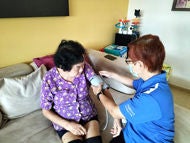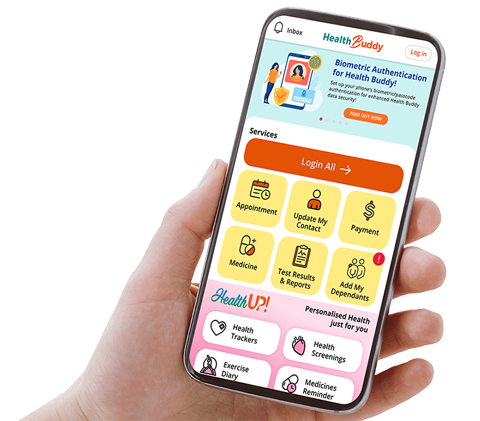
Though not uncommon, gastroparesis often remains undiagnosed for many years, affecting patients’ health and quality of life.
Nausea, bloating,
abdominal pain, and
vomiting, sometimes
even throwing up
what was eaten the day before.
These symptoms may be easily
dismissed as gastric problems
like indigestion and stomach
ulcers — and indeed, these
indications are often diagnosed
and treated as such.
But they can also describe a little known condition known as gastroparesis, a chronic illness often associated with diabetes, especially type 1. Gastroparesis is linked to damaged nerves and muscles that control how food in the stomach empties into the intestines.
“By definition, someone has gastroparesis when the stomach takes a long time to empty itself into the intestine,” said Dr Andrew Ong, Senior Consultant, Department of Gastroenterology and Hepatology, Singapore General Hospital (SGH).
When food is not emptied but accumulates in the stomach, the person then develops nausea and vomiting as a result. “That is what gastroparetic patients experience because the food basically has not left the stomach. It has been there since the day before,” he added.
Though not widely known, this disease is fairly common. “Data from the US and Europe suggests that 20 per cent of diabetic patients suffer from it. While we do not have Asian data, it is fair to say that conservatively, 10 per cent of diabetic patients in Asia have some form of gastroparesis,” said Dr Ong.
Patients with persistent symptoms referred to hospital specialists usually undergo an endoscopy first to rule out stomach obstructions, before taking a gastric emptying test to determine if they have gastroparesis.
Patients often suffer from gastroparesis for years before receiving an accurate diagnosis. If undiagnosed and untreated, gastroparesis can affect patients’ quality of life. Besides daily discomfort, persistent retching and vomiting can lead to tears and bleeding in their food pipes. Some experience so much discomfort that they avoid eating, losing weight and important nutrition.
Besides patients with diabetes, those with Parkinson’s disease, post-viral illnesses, and postsurgery complications can also develop the condition.
Type 1 diabetes usually occurs in childhood, so if gastroparesis occurs, it does so at a younger age for these patients — in their 30s — as it takes years for diabetes to affect their nerves. For patients with type 2 diabetes and Parkinson’s disease, gastroparesis may occur only later in life.
“For diabetics, the biggest problem is their sugar control, which can go all over the place,” said Dr Ong.
A patient who does not know that he has gastroparesis will continue taking insulin even when food has not been absorbed. He effectively overdoses on insulin, pushing sugar levels down. Hours later, his sugar levels rise as the food empties into the small intestines. “This makes it very confusing for both the patient and the healthcare provider trying to control his sugar,” Dr Ong said.
Apart from short-term medication to help empty the stomach and longer-term pain relief medication for stomach discomfort, patients will be advised to make dietary and lifestyle changes. A low-calorie, low-fat, and low-fibre liquid diet that empties from the stomach faster ensures patients’ calorie and nutritional needs are met. Eating smaller and more frequent meals also helps, while smokers should quit the habit as smoking can irritate stomach nerves.
Surgery to dilate a narrow passage between the stomach and small intestines can improve gastroparesis caused by a tight opening.
“Many patients will have this condition for a long time so they need to be empowered. Once they know what they can eat and what triggers their symptoms, they can be creative in making adjustments and take control of their lives,” said Dr Ong.
Keep Healthy With
© 2025 SingHealth Group. All Rights Reserved.



















